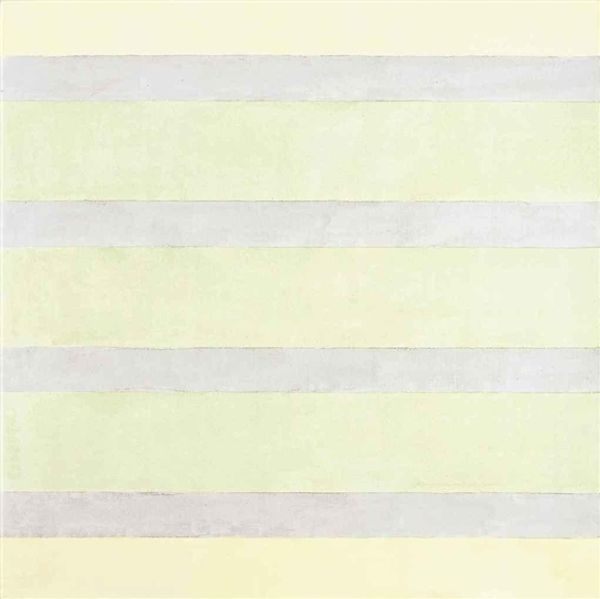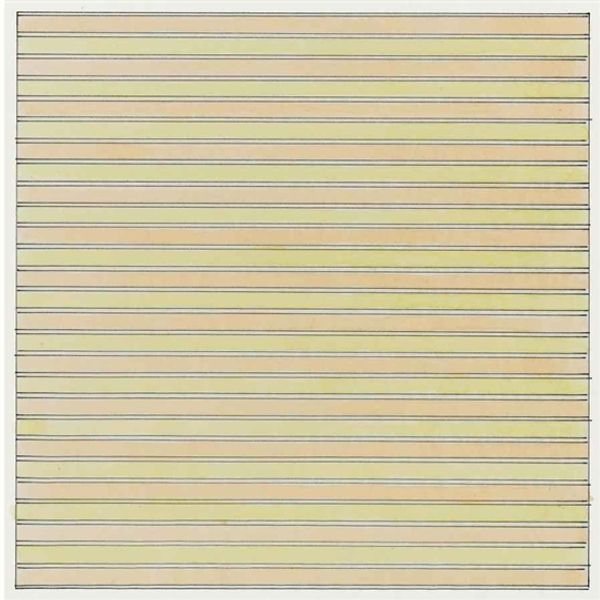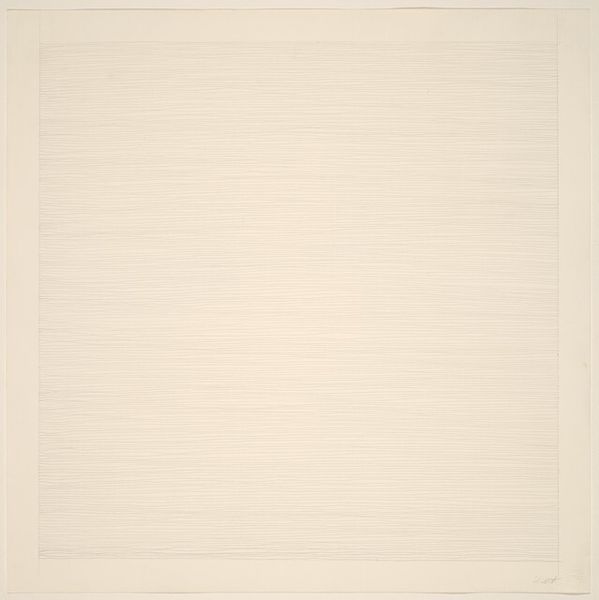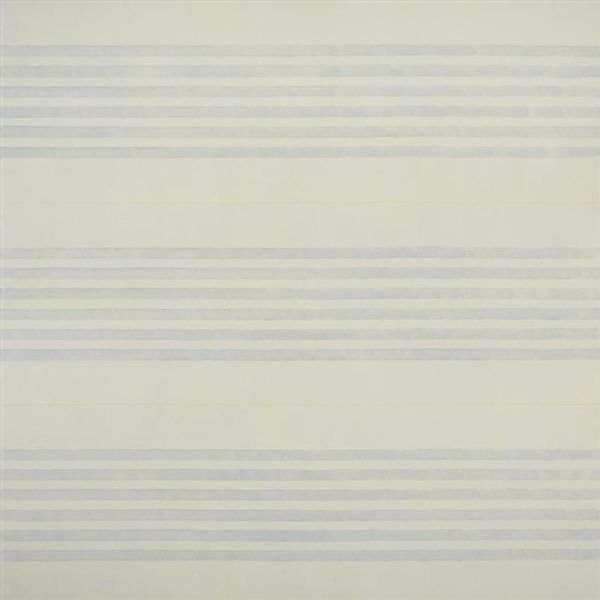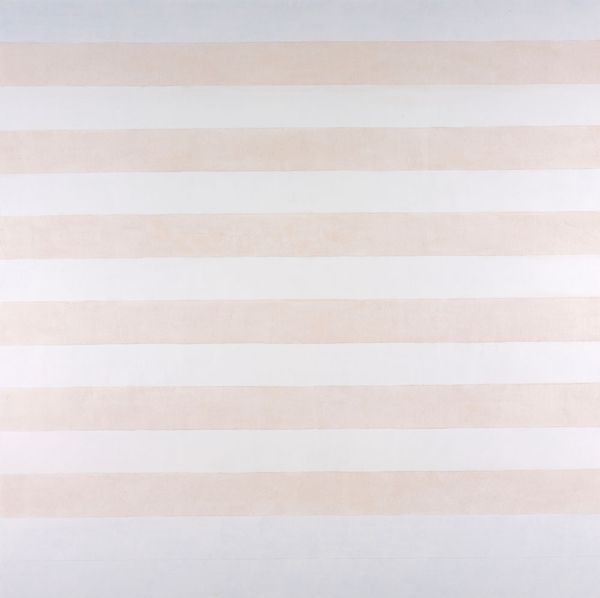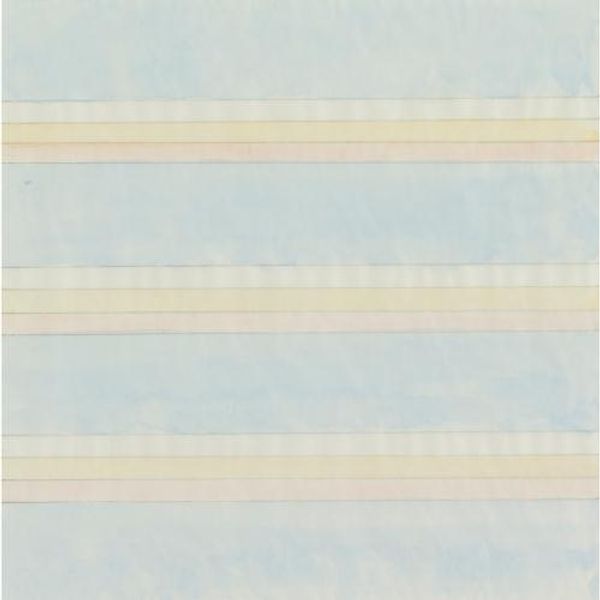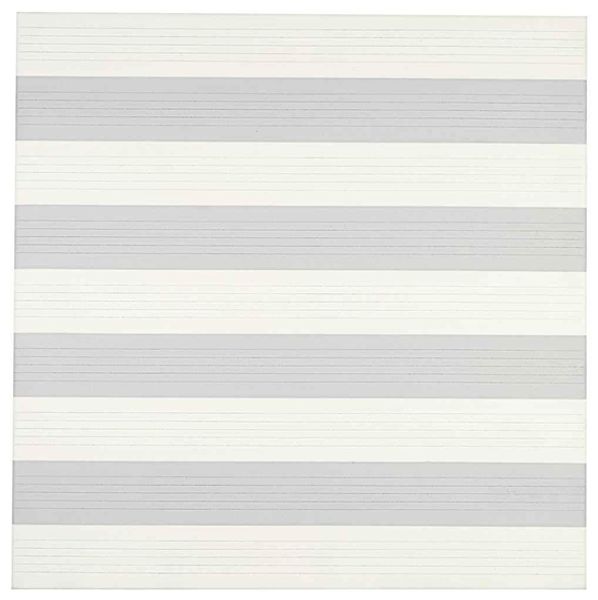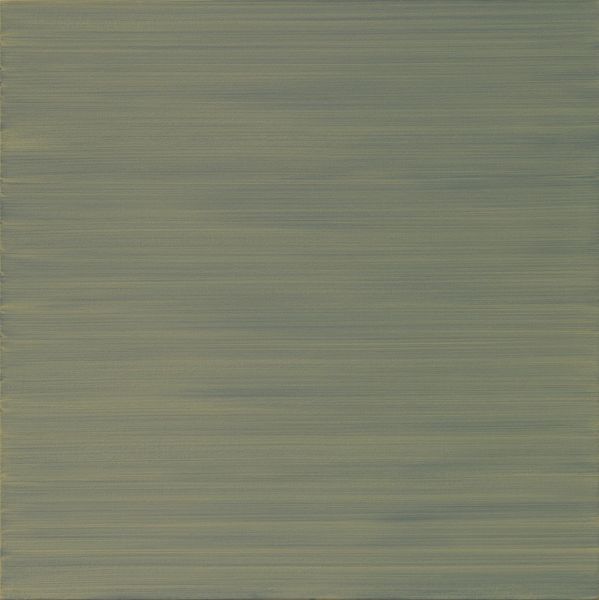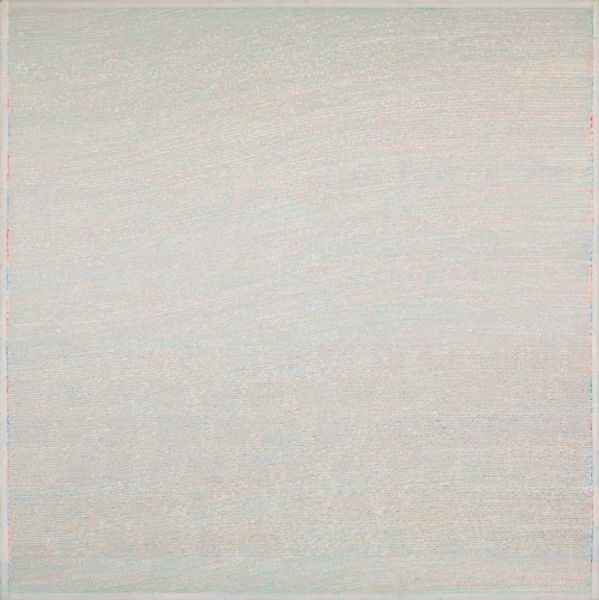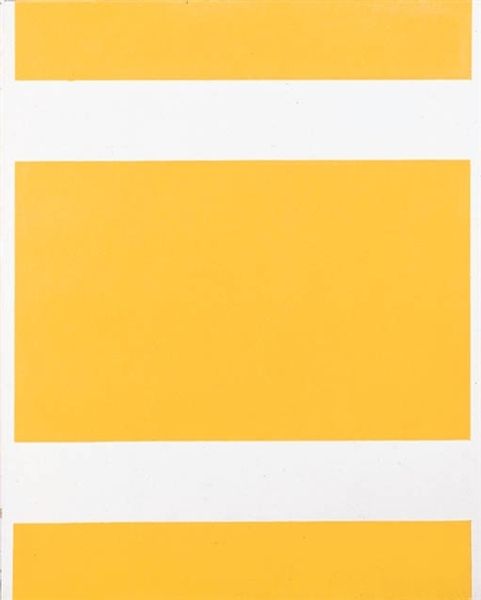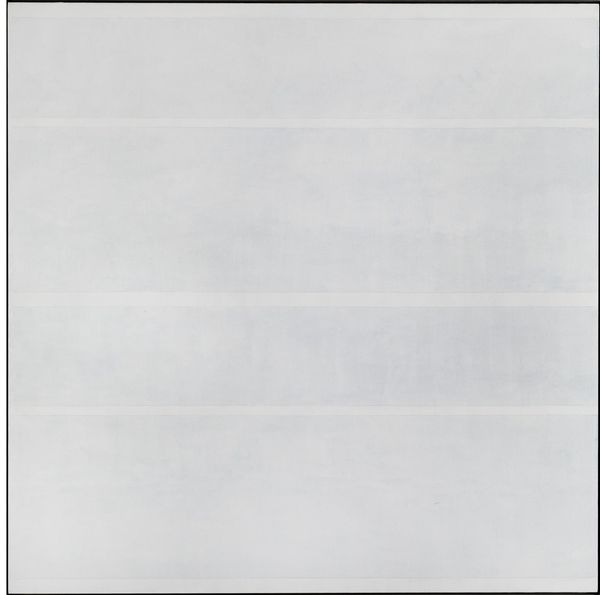
Copyright: Agnes Martin,Fair Use
Editor: This is Agnes Martin's "Untitled," from 1998, created with acrylic paint. The pale yellow and blue lines create a serene feeling. I'm curious, what's your perspective on the materiality of this seemingly simple piece? Curator: It's precisely that simplicity that speaks volumes about Martin's process. Look at the surface, the apparent imperfections. Consider the labor involved in repeatedly applying thin layers of acrylic to achieve this delicate, almost ethereal quality. The horizontal lines, while seemingly straightforward, are a testament to the artist's hand and her dedication to craft. Editor: So, you're saying the visible effort is key? How does that connect to the wider art world at the time? Curator: Absolutely. Remember, this was created towards the end of the 20th century, amidst a burgeoning interest in Minimalism, but also in direct contrast to mass-produced images. The imperfections inherent in the manual creation challenge traditional notions of high art by emphasizing the materiality of painting itself – the paint, the canvas, the labor. Think about what is valued and commodified within the art market; here, the means of production are laid bare, inviting reflection on consumption and value. Editor: I never considered it in light of production. Are the materials telling a story about accessibility too? Curator: That's an interesting thought. Acrylic paint, unlike oils, was becoming more widely available and affordable. In that way, this piece speaks to the democratizing potential of art making. Did that influence Martin? Maybe. Editor: I'm seeing it so differently now, as an accessible invitation instead of just minimalist aesthetic. Curator: Indeed. It is about disrupting hierarchical ideas of art as an aesthetic object of consumption and re-centering attention on production, process and accessibility, what goes into the making. It's a call to acknowledge both art and labor as equal and inextricable in art history.
Comments
No comments
Be the first to comment and join the conversation on the ultimate creative platform.
